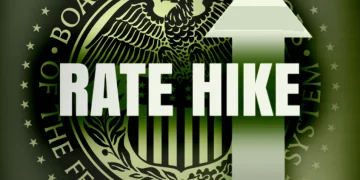Introduction
Over the past several years, technology stocks have led the market with astonishing returns. The post-pandemic era, artificial intelligence (AI) boom, and strong earnings from mega-cap tech firms like Apple, Microsoft, NVIDIA, and Alphabet have all fueled a powerful rally.
But with valuations climbing sky-high, many investors and analysts are asking: Has this rally gone too far? And is a correction on the horizon?
This article dives into the key drivers of the tech stock rally, examines whether the current valuations are sustainable, and explores the potential risks of a pullback.
1. What’s Driving the Tech Rally?
Several powerful forces have propelled tech stocks to record highs:
📈 a. AI and Innovation Hype
The rise of generative AI tools like ChatGPT has sparked massive optimism. Companies developing or integrating AI into their platforms are being rewarded with investor enthusiasm and capital.
- NVIDIA, a leader in AI chips, saw its market cap soar past $2 trillion in 2024.
- Microsoft and Alphabet are locked in an AI arms race, both benefiting from cloud and productivity tools infused with AI.
💰 b. Strong Earnings from Big Tech
Tech companies are more than hype. Many are delivering real revenue and profit growth:
- Apple and Microsoft continue to show strong cash flow.
- Amazon rebounded with cloud and advertising revenue growth.
- Meta and Alphabet improved margins despite economic headwinds.
🏦 c. Lower Interest Rate Expectations
The anticipation of Federal Reserve rate cuts has benefited long-duration growth stocks. Lower interest rates make future earnings more valuable, favoring tech firms with high growth expectations.
🌎 d. Global Digital Transformation
From enterprise cloud adoption to 5G rollout and IoT expansion, structural trends continue to support long-term demand for technology products and services.
2. Are Valuations Stretched?
Here’s where concern starts to grow.
📊 a. P/E Ratios Above Historical Averages
- The Nasdaq-100 is trading at a forward price-to-earnings (P/E) ratio above 28, significantly higher than its long-term average of around 20.
- NVIDIA’s P/E soared above 60. Tesla and other high-growth names also show elevated valuations.
🧠 b. AI Hype vs. Real Revenue
Many smaller tech companies are being valued based on future potential—not current earnings. The 2000 dot-com bubble offers a sobering reminder: hype doesn’t always translate into sustainable profits.
- Investors may be overestimating how quickly AI adoption will lead to monetization across sectors.
🏗️ c. Concentration Risk
A handful of mega-cap tech firms (the “Magnificent 7”) now account for a disproportionate share of market gains. This concentration raises systemic risk: if a few of these stocks falter, the broader market could drop sharply.
3. Signs That a Pullback May Be Coming
While no one can predict the exact timing of a correction, several signals suggest that a short-term pullback is possible.
🔔 a. Overbought Technical Indicators
Relative strength index (RSI) and other momentum indicators show many tech stocks in overbought territory.
📰 b. Earnings Disappointments Could Trigger Selloffs
High expectations set a high bar. If earnings from leaders like Apple or Meta miss even slightly, the market may react sharply.
🌐 c. Geopolitical and Regulatory Risks
- U.S.-China tech tensions, particularly in semiconductors and AI, could impact supply chains and growth prospects.
- Antitrust scrutiny in the U.S. and Europe continues to pressure major players like Google and Amazon.
📉 d. Profit-Taking and Rotation into Value
As investors lock in gains, we could see a rotation into value stocks, dividend payers, or defensive sectors, especially if inflation surprises to the upside.

4. Arguments Against a Major Correction
That said, not everyone is calling for a crash.
🏦 a. Strong Balance Sheets
Big Tech firms are sitting on hundreds of billions in cash. They can weather macro shocks better than most other sectors.
💻 b. AI Is a Real Productivity Game-Changer
Unlike previous tech hype cycles (e.g., dot-com), today’s AI innovations are already being monetized—via software subscriptions, cloud services, and hardware sales.
📈 c. Global Investor Demand
Tech is still attracting huge interest from institutional and retail investors globally, especially as alternatives (like real estate and fixed income) remain relatively less attractive.
5. What Should Investors Watch Now?
If you’re worried about a pullback, here are some smart things to monitor:
- Q2/Q3 earnings: Pay attention to forward guidance, especially around AI monetization.
- Interest rate decisions: A slower pace of rate cuts could cool the rally.
- Valuation spreads: If smaller-cap tech or speculative names run too far ahead of fundamentals, that’s a warning sign.
- Market breadth: If only a few stocks are driving gains, the rally is more vulnerable.
Conclusion: Is a Correction Coming?
Yes — some form of correction or consolidation is likely. Valuations are high, expectations are sky-high, and markets don’t go up forever.
But is this another dot-com bubble? Probably not. Unlike the early 2000s, today’s tech leaders are highly profitable, global in scale, and deeply integrated into the economy.
So, while some short-term downside risk exists—especially if earnings disappoint or interest rates surprise—the long-term outlook for technology remains strong. Investors may simply need to be more selective, avoid speculative froth, and prepare for some inevitable bumps along the way.

















































